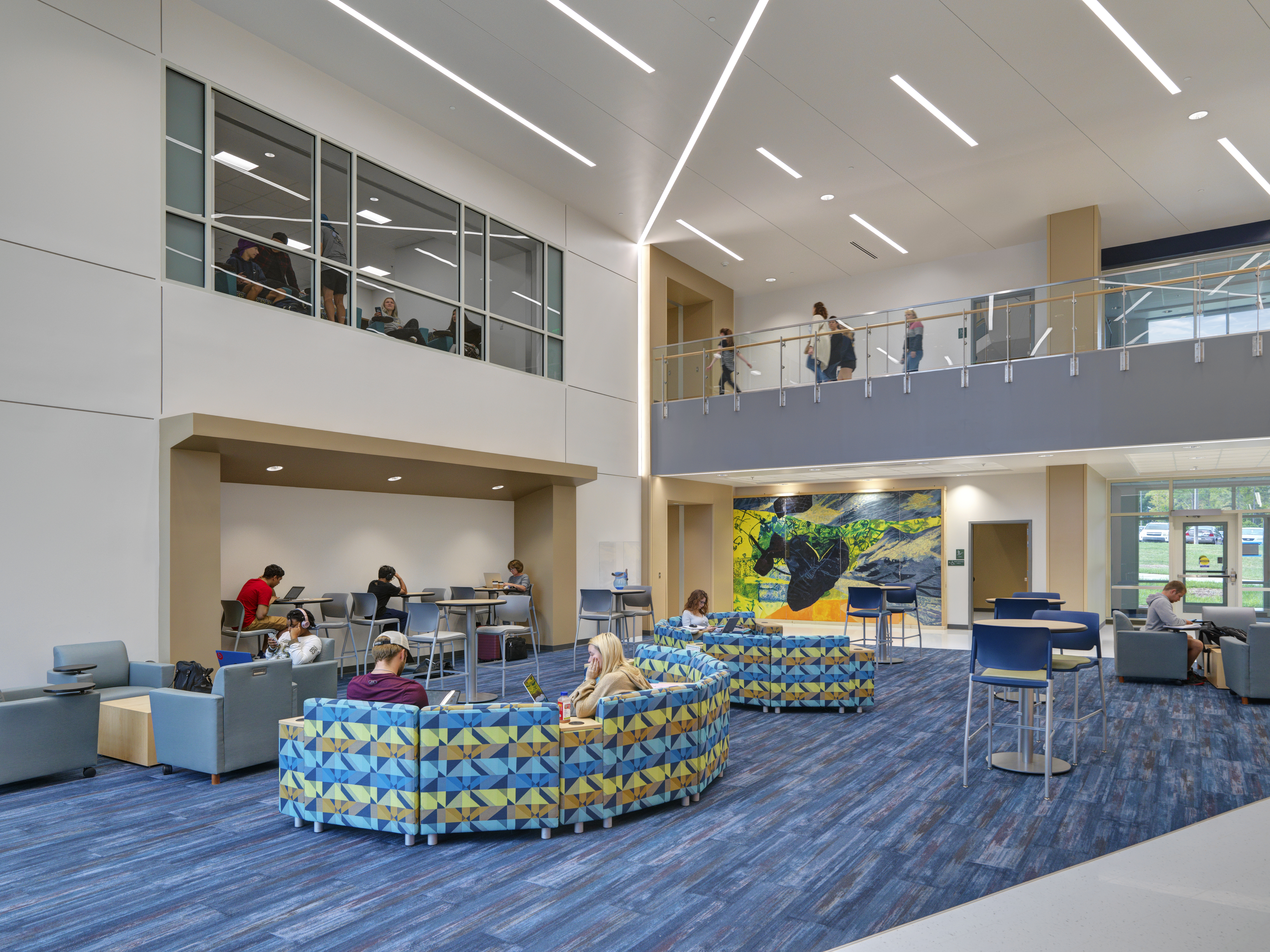
CPCC Levine Campus Academic Building Design Workshop Case Study
By: Charity Myers, Marketing Coordinator, Moseley Architects
Moseley Architects had the privilege of partnering with Central Piedmont Community College (CPCC) to provide advanced planning and subsequent design services for the school’s new Levine Campus Academic Building. This new facility was not a simple academic structure meant to serve a single department. Rather, its purpose was to provide a diverse array of spaces for several different student life and academic needs, all housed within a thoughtfully curated facility. This required connectivity and functionality to be at the forefront of architectural considerations. Through our work in the advanced planning stage, our team gained a thorough understanding of how unique these desired features and their related challenges would be. Thus, when given the opportunity to move forward with design services, a primary objective from the beginning was to employ a workshop process through which every voice was heard and properly reflected in the final design.
Casting a Wide Net
Key project features include a new library, classrooms, offices, computer labs, science and healthcare labs, an academic learning center, a math emporium, and a Barnes & Noble bookstore, with multipurpose lounge and collaboration spaces incorporated throughout. Such a complex undertaking with a diverse group of end-users can easily buckle beneath the weight of a chaotic process. This can potentially result in some design goals being met, while others slip through the cracks. To avoid this pitfall, our team utilized a workshop approach that strategically gathered input from all departments to inform design decisions.
In our workshop strategy, we collaborated with two groups that each served a distinct function. First, determined to gain a thorough understanding of each end user’s precise needs, we sourced feedback from a large, diverse group of departmental representatives to learn about their individual questions, concerns, and desires. One of these representatives was Karen Summers, Dean of Health Sciences at CPCC, who advised: “A lot of people were at the table, but everyone had their input at the end of the day. [The team] had the opportunity to hear concerns from all and incorporate them into everything.”
We then filtered that information through a smaller, more focused group of key decision-makers who were ultimately responsible for steering the project in a concentrated manner. By employing this method, all comments were considered in an organized, effective way without creating confusion and undue stress on the client.
Navigating Challenges
While this workshop method creates a foundation of inclusivity and understanding, it is not without obstacles. Our team encountered two specific challenges over the course of this experience with CPCC. First, given the multifaceted nature of the project, it was vital for us to be sensitive to lags in communication. During the initial idea-mining phase, communication was plentiful—but we had to be mindful of including departmental representatives on a consistent basis throughout the duration of the project. This is not always easy when working with a large group but must be prioritized to maintain the same sense of inclusion cultivated in the early stages.
The second challenge and lesson learned was the importance of providing proper technical training for end users upon project completion. The final Levine Campus Academic Building includes state-of-the-art technology and modernized features—it was therefore important to make sure faculty and staff knew how to fully utilize their new resources, especially after their feedback played such a major role in bringing those elements to fruition.
Designing Solutions
Of course, all of this means very little if the completed facility fails to fulfill client needs. To gauge our success in adequately reflecting the vision expressed to us by workshop participants, we recently followed up with a few representatives for feedback that goes beyond first impressions. According to Melissa Vrana, Executive Director, Performance Facilities and Events, “The final product is great and functions as a multipurpose space . . . everything was incorporated well.” Edith McElroy, Associate Vice President of Academic Affairs, echoed this sentiment and expressed that she is satisfied with the final design and appreciated that we “looked for alternatives that would please everybody and foster compromise.”
As reflected in this partnership with CPCC, Moseley Architects recognizes the importance of community colleges and the vital role they play in the fabric of their surrounding communities. With this reality in mind, we are committed to employing methods that will not only meet the practical needs of end users but will benefit the area in which a college resides while serving students, faculty, and staff for years to come. In fulfilling those goals, we hope to further exemplify our dedication to enriching lives, designing solutions, and building trust.

